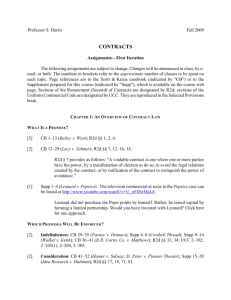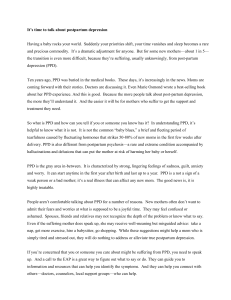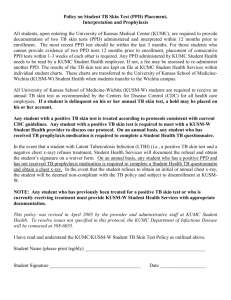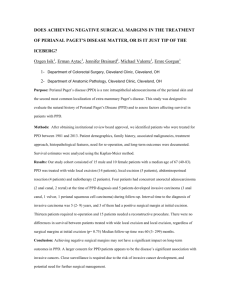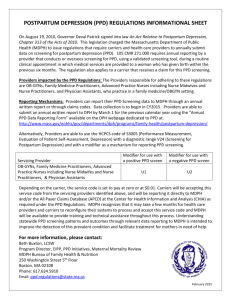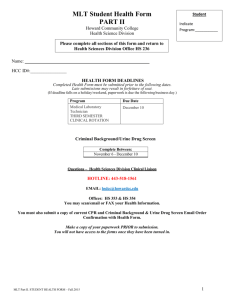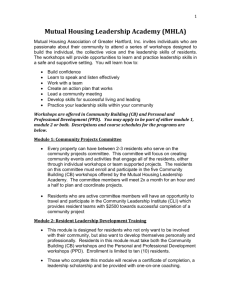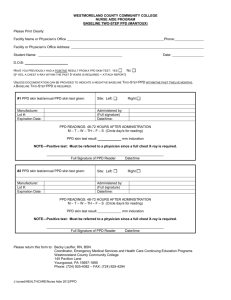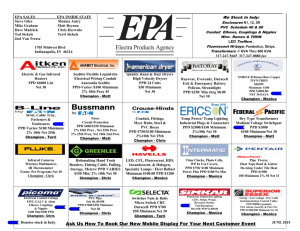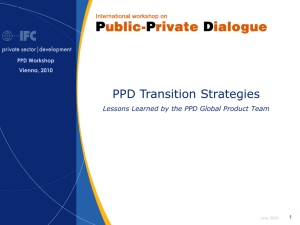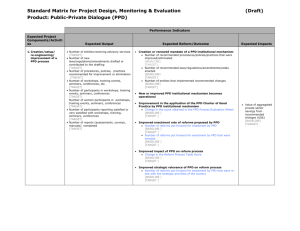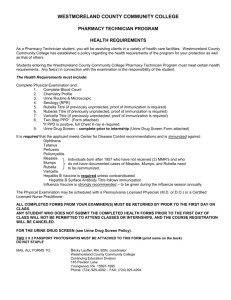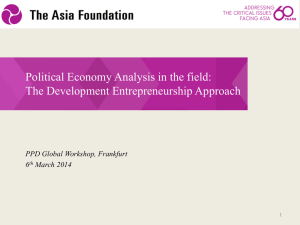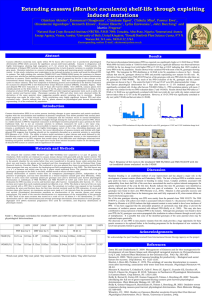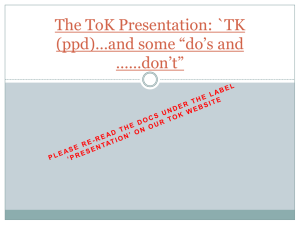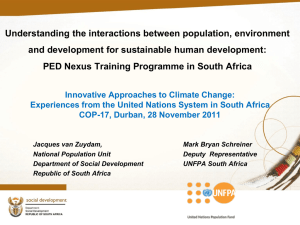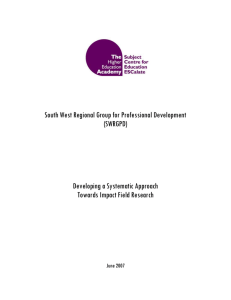Draft tool to measure public private cooperation
advertisement
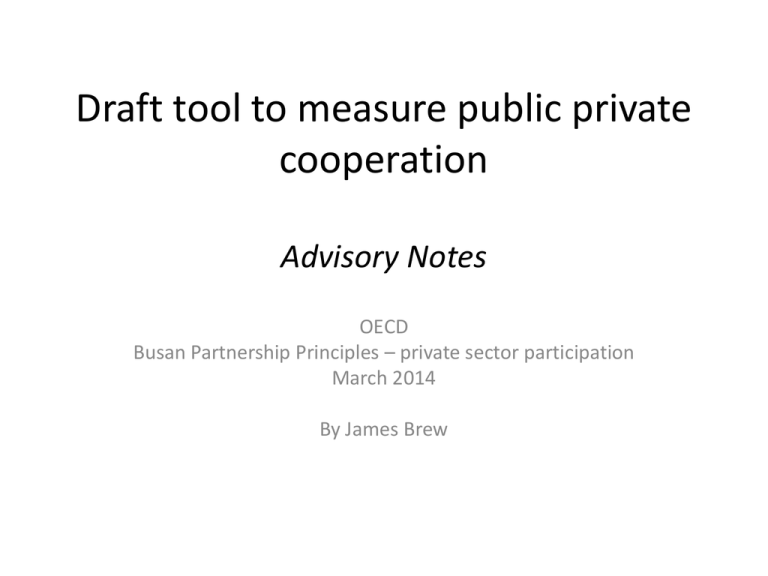
Draft tool to measure public private cooperation Advisory Notes OECD Busan Partnership Principles – private sector participation March 2014 By James Brew Tool Framework Busan Partnership Agreement Global Partnership for Effective Development Cooperation Global Partnership Monitoring Framework 10 indicators 1 Indicator on private sector engagement Reference for the tool • 10 indicators identified to support delivery of the Busan principles: – – – – – ownership, results, inclusiveness, transparency & accountability • 1 Indicator on private sector engagement • Post – Busan Interim Group Joint Statement Article 32b: ‘Enable the participation of the private sector in the design and implementation of development policies and strategies to foster sustainable growth and poverty reduction.’ Private sector engagement indicator ‘The question is not so much to assess if public – private dialogue is happening as such but to provide a tool to understand requirements for meaningful dialogue to happen.’ ToR Piloting of the M&E tool to measure public private cooperation in a targeted group of countries Tensions in design • • • • • Tool v. Evaluation Narrow (single PPD) v. Broad (any PPD) Measure a PPD v. Assess environment Tool with nuance v. tool for top level Deep assessment v. Tool for assessment Perspective – the long view • Partners seeking a starting point for engagement / consultation / coordination • Appreciate DPs have differing capabilities • Private sector voice is an outcome of governance, organization & capacity • Evidence of existing PS engagement does not indicate that the environment is conducive to private sector engagement Cross cutting considerations – operational view • What is an ideal environment for private sector engagement? • Are available indicators (e.g. DBI, Worldwide Governance Indicators) a proxy tool? • What is required for a sustainable PPD? • What capacity is required to create sustainable PPD? • Tool to be responsive to short term need • Tool to be managed locally • Tool is one part of a log frame Views indicates that PPD is complex – the tool can provide clarity to public private cooperation Tool as part of a PPD Log Frame Tool to measure private sector Assessment Design Scoping Implementation Concept M&E The Tool should capture the enabling environment for public private cooperation to take place • To understand whether the private sector can engage in meaningful dialogue we have to understand the environment that it is operating in • The PPD environment comprises of the factors that enable an outcome oriented dialogue to be firstly instigated and later institutionalized. PPD Environment – indicative only Legislation & Regulations Gov. Dept. BMOs Mandates Private Sector Media Secretariats Ministries Development Partners Sub National Civil Society Capacity PPD Tool Introduction • Tool illustrates the environment that public – private sector exist within • Tool is top level so that it can be managed by field offices • Is designed to be completed within one week • Consequently does not go into the nuances of: – Political environment – Private sector relationships and – Other challenges e.g. conflict, trust Assessment Tool Indicators 1. 2. 3. 4. 5. 6. 7. 8. 9. 10. 11. 12. Existence of Public Private Dialogue Public sector institutional alignment Regulatory environment for PPD Private Sector Civil society Development partners Champions Facilitation & Management Outreach Gender Communications Outputs Assessing PPD Tool results • High scores indicates: – – – – Infrastructure for PPD exists Governance framework is in place Advocacy is possible Chances of institutionalized PPD is high • Low scores indicate that work is required – – – – Provides stakeholders with entry points Provides DPs with a coordination tool Raises awareness of the governance framework Indicates a low level of PS capacity to dialogue Outcomes • Tool provides data for assessment of private sector as a partner • Tool provides a considered overview of the conditions for private sector engagement • Identifies possible areas of support for the private sector • Builds awareness of the environmental conditions that enables private sector dialogue to happen (refer to slide 2) Conclusion • Partners need to review draft • Need to pilot draft • Need to provide advisory note for implementation • Mainstream the tool for DPs to implement
